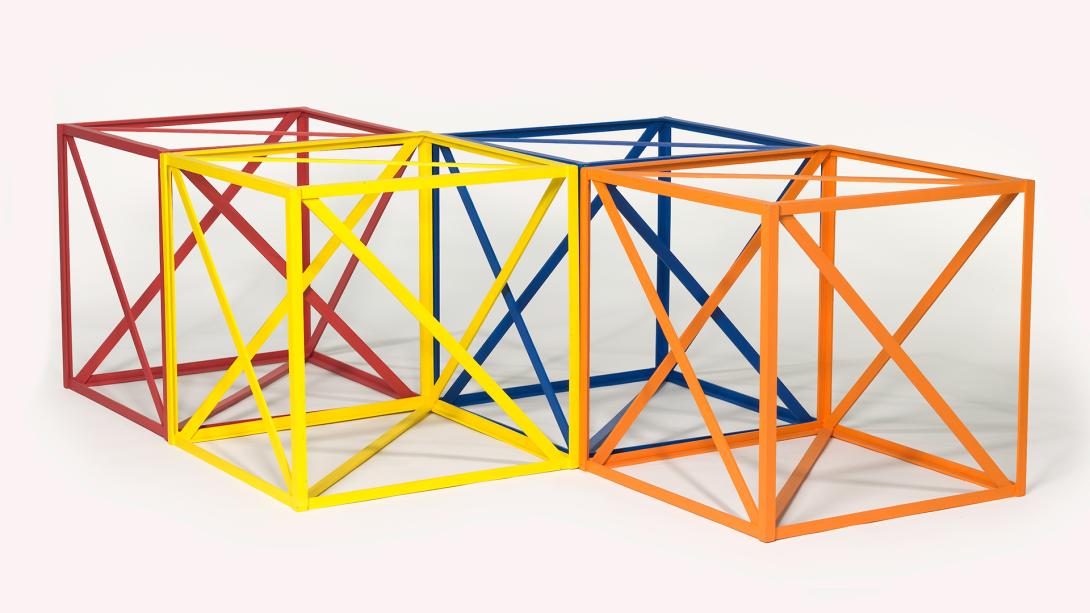Rasheed Araeen
APT9
Born 1935 Karachi, Pakistan
Lives and works in London, United Kingdom
Rasheed Araeen began making conceptual and abstract art in his hometown of Karachi in the late 1950s before moving to London in 1964, where he devised some of Britain’s earliest minimalist sculptures. Now regarded as one of the pioneers of minimalist sculpture in the UK, Araeen is also an activist and a leading voice in challenging Eurocentric discourse around contemporary art. Though known for his sculpture, his artistic oeuvre has included abstract drawing and painting, collage, photography, multimedia and performance created over a career spanning six decades. In the early 1970s, Araeen aligned himself with radical black movements and produced photographic, text and collage works reflecting his political motivations. His Black Manifesto on the future of art in the third world was produced in 1975–76, and he established the contemporary art journal Third Text in 1987.

Rasheed Araeen began his career developing abstract and conceptual works in Karachi, Pakistan, in the 1950s, before moving to London in 1964, where he created some of the pioneering works of British Minimalism. Chaar Yaar I (four friends) 1968 is an example of these early works and captures Araeen’s explorations of symmetry and form. Made using readily available materials, they were conceived as interactive modular forms that could be rearranged, a feature that distinguished them from the hard-edged, static minimalist art of the time. Lacking space or exhibition opportunities, these works were often documented and then dismantled, with several reconstructed several decades later.
In the 1970s, Araeen began to challenge the Eurocentrism of the art establishment. He addressed issues of racism and marginalisation, and he championed the role of minority artists within the mainstream canon. He also began a prolific writing and publishing career at this time, including founding the influential art journal Third Text in 1987. Through performances and conceptual experiments, his works of the 1970s and 1980s reflected his political views, as seen in a series of nine-panel ‘cruciform’ works that juxtapose symbols of Islamic culture and images of conflict in Islamic countries with Western icons and images from popular culture.
More recently, Araeen has continued his formalist inquiries with renewed energy, creating vivid works that recall the expressive energy of his early abstract works created in Karachi, and the minimalist arrangement of his modular sculptures from his early years in London.

